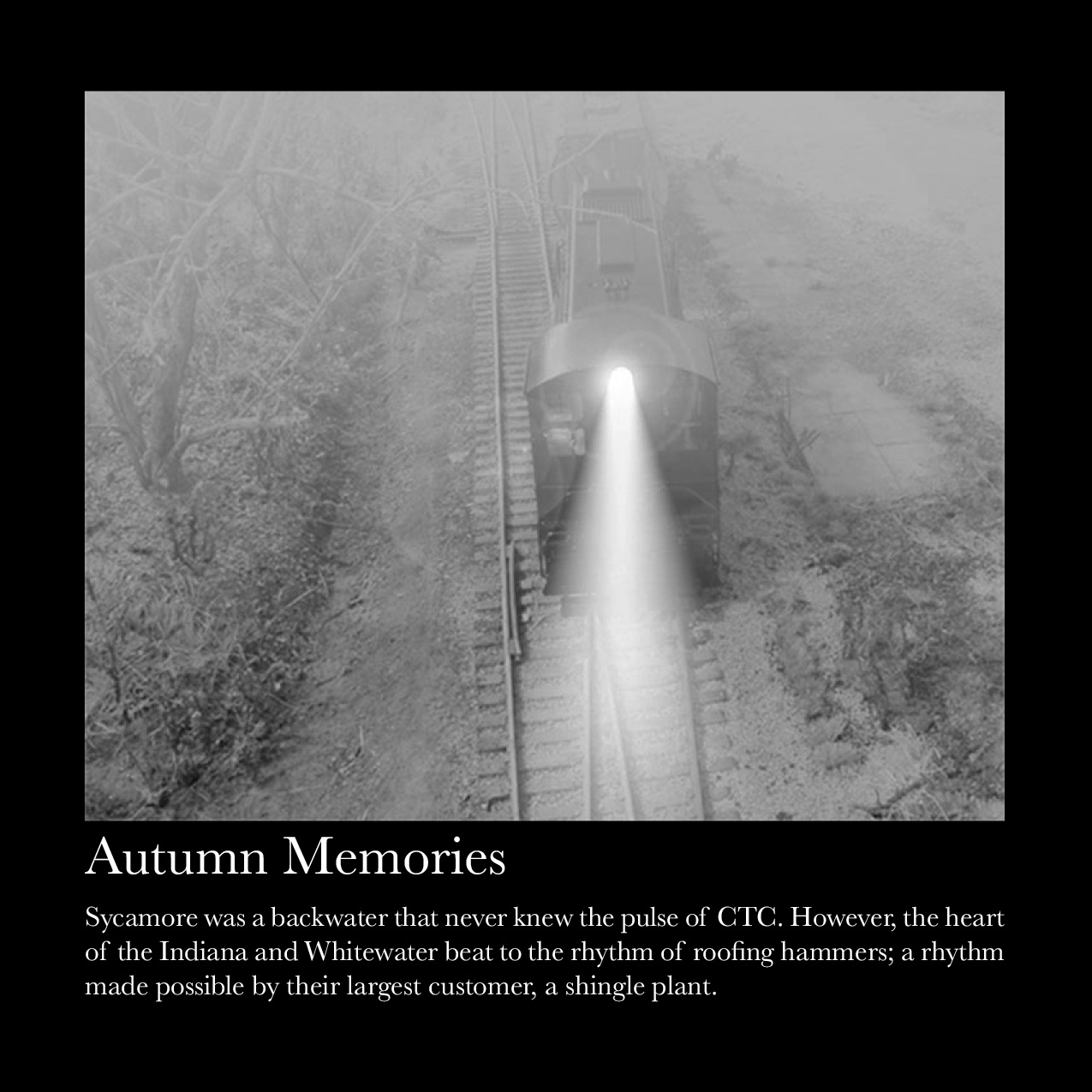One Image And A 1000 (or fewer) Words.

Words and images are powerful things. An image not only conveys the appearance of an object, it can also evoke an emotion. Looking at the image above, do you really need to know what kind of benchwork or scenery material underlies that scene? Does it make a difference what brand of track I used or who manufactured the loco and freight car? Do the room dimensions or the modeling scale even matter?
Instead we have a story about autumn memories. The black and white image sets the mood and perhaps we’ll discover what’s so meaningful about this time of year. From the simple prose we learn this place called Sycamore is small and well off the mainline. We want to know more about this railroad and why that important customer is the heartbeat of its livelihood as a business. Instead of reciting the product list we can all repeat in our sleep, you get a glimpse of what this craft means to me.
A strong image glides right past all our filters and goes right to the heart. Coupled with the right words, it draws us out of ourselves and into its world.
Regards,
Mike
PS. Yes, the image from my layout was manipulated in Photoshop by converting it to black and white, adding the fog and headlight glow. The actual modeling is all genuine however.
Mike,
Don’t know if it was intentional, but one of the benefits of the monochrome image is that it enhances the texture of the modelling. I am particularly drawn to the verbiage on the paving slabs, and the slightly smoother area of ballast where railroaders have walked beside trains during switching.
That’s not to detract from your point, in fact I think the subtlety underlines it. Texture is so important, but colour can easily distract from it.
Simon
Simon,
I’ve acquired a new appreciation for black and white images. Your observations about them are spot on.
Mike
Hi Mike
I discovered your blog a few weeks ago and I’ve been enjoying reading your posts. I found this one especially interesting, and it stirred up some related thoughts I’ve had for awhile.
In previous decades some writers in the model railroad press would weave a fictional story – one with a simple plot and characters who had speaking parts – into their construction articles. There were a few that were simply story, along with staged photos of models, without any accompaniment of typical things like construction notes, layout design ideas, and so on. These stories weren’t the usual things like fictional historical accounts to set the scene for a freelanced layout or layout tours, but simply short stories in their own right. Most attempted to be humorous or tell some kind of tall-tale. E. L. Moore, Raymond Frankenberger, and Malcolm Furlow had a go at them, but there were likely others. I think these were early examples of modelers with a writing bent going a little further to capture and communicate the spirit of what they were building.
Your example is beautiful and goes much further than those early ones. I guess it should go without saying, but much like there is a wide variety of genres and styles of stories, so too in model railroading. Although the early examples are charming and humorous, they may also have unintentionally set a precedent that storytelling isn’t anything more than a less than serious diversion from the real goals of model railroading. I think there is a lot of untapped potential, and lines of thought to be explored that were abandoned years ago.
One of the most interesting model railroad storywriters today is Mikkel at the ‘The Farthing Layouts’. A list of his stories can be found here:
http://farthinglayouts.blogspot.ca/p/gallery_18.html
They’re excellent and I particularly enjoyed the three part ‘The Honourable Slipper Boy’, which is based on a true story, and ‘What what really happened in the Cuban missile crisis’.
Your atmospheric piece, Mikkel’s plot driven story, and the tall tales of past writers, suggest some new directions for exploration. To be honest, I’m not completely sure what they are, but maybe that’s the thing with exploration.
Keep these excellent posts coming!
Cheers,
Jim.
P.S. Thank-you for fixing my login problem.
Welcome Jim,
I’m glad to have you here and thank you for the kind words. I believe the story forms we could use to share this craft are only limited by our imaginations. We default to the shopping list format because it’s easy to compose.
Regards,
Mike